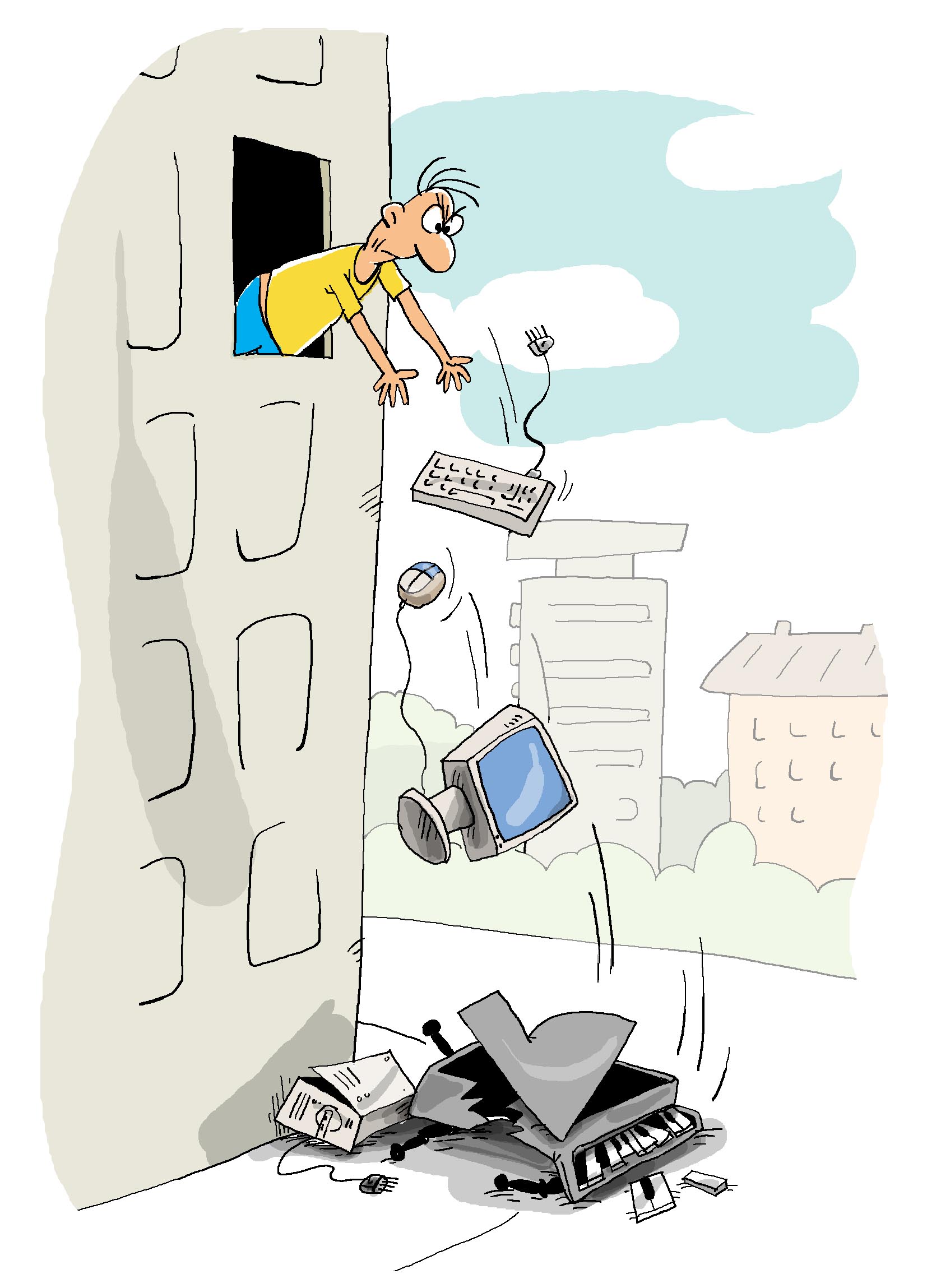Letter to people who are afraid of computer technology

We’ll be honest with you: even though “Soft Way to Mozart” ® heavily relies on computer technology, hundreds of music teachers and thousands (soon to be millions) of music lovers who are using it all around the globe are far from being technically literate people. WE manage. YOU will, too! Yes, of course, among us there a few computer geeks. They are definitely popular in our community and as soon as you find them, don’t let them out of your sight! Sometimes we have technical questions. Sometimes! But not most of the time because despite our fears and phobias, computers today are winning and getting into every house . . . room, closets, backyard, doghouse . . . Well, you get the point.
Sometimes computers are very capricious creatures: they easily get different viruses and infections, they can be “overloaded,” tired, get ill to the point that they need “medical” attention. All of or sudden they can give up on us. It happens. But nowadays finding technical support here and there and everywhere is not such a big deal. You are not going to be left in the middle of a desert. And on our site you are going to be supported also. So you are safe!
Our software portion of the program works with computers as old as 10 and as young as newborn. It works with window 98 and windows 7 and with all the “animals” of Mac. You don’t have to run to Best Buy or another computer store to buy a brand new model for our program. In fact, we recommend the complete opposite: find an old computer for your music lessons – a computer that has decent graphics and sounds (most of them have do). Most importantly, get a computer you are not using very often. Why?
Because we want your piano lessons to be a peaceful, enjoyable, no hurry-scurry EXPERIENCE. If every time you have a music session, you have to run around your computer (that you use for many different other things) and digital keyboard/piano, looking for the cable to connect them and frantically moving from one place to another, you are not promoting your music literacy.
Of course, if you have only one working computer in your house, it’s OK to use it for music sessions, too. But keep in mind one simple thing. Our “Soft Way to Mozart” ® program is like a piano teacher in your house and it needs a little space. If you want this teacher to be available for you 24/7, create a little piano + computer work station somewhere in a quiet place. If you use just a keyboard and a laptop, it won’t take up much of the space in your home.
If you have never had any piano lessons before or you have very little knowledge about playing the piano but have always dreamed of owning a grand piano, think twice. Decide which experience you are willing to get: the experience of SUCCESSFUL piano learning or the (maybe as successful) experience of piano dusting. The excitement about the grand piano won’t last more than couple of months – then this large piece of useless furniture will take up a big chunk of your space forever. Why do you think putting a piano on the street in New York is so popular? True, anyone can come by and play it, but more importantly, it’s no longer taking up room in someone’s tiny apartment!
We are saying this not because we don’t like acoustic pianos, especially grands. We do! In fact, our entire system of learning is focused on getting students to the point that they will be able to sit and play any acoustic piano with paper sheet music on the stand. But we also know that the success of learning ANYTHING is based on interaction. Our minds are built that way: we don’t like having more questions than answers when it comes to learning something new. So, why go against our own nature?
In fact, for centuries PRIVATE piano lessons have been and still are the most effective music lessons exactly for the same reason: because they are the most intensively interactive (sometimes, the interaction between piano teacher and a student is too intense, though. Being afraid of computers is NOTHING compared to that!)
Again, don’t misunderstand us: the last thing we want is to dismiss a piano teacher and replace her with a machine! We just want you to have the answers to all your immediate questions about playing your piano and reading music as you progress (sophisticated questions can wait till the next visit with your teacher). We want you to have a wonderful, positive, successful and fruitful experience with music education – that’s all.
So, grand pianos rule! But somewhere in the background, there has to be at least a small keyboard connected to a computer. And our “Soft Way to Mozart” ® program has to be loaded and ready, of course—ready to teach you how to love to play.

